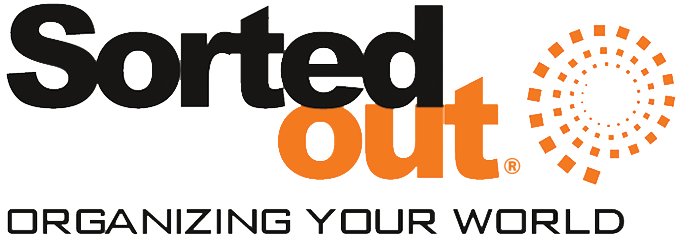Inventory for Aging Clients
I’ve talked before about the importance of creating and having a home inventory (here and here), but I want to emphasize how critical this task is for our aging clients.
Why is it important to have a home inventory as I grow older?
Having a home inventory is especially important for those in the later stages of aging because it ensures a simpler process and that you won’t be caught off-guard in the future. You want to be sure you know what you have in your long-term storage (especially if you don’t have children, haven’t looked in these spaces recently, etc.). With a home inventory, if a spouse falls ill or passes, you’ll know what items are in the house/storage and where these items should go. It’s important to know if their items were left to someone or if they wanted them to be somewhere specific after they pass. An inventory also simplifies the process for potential future insurance claims and for estate documentation.
Not only is an inventory important for aging clients because it will help you (or your family members) in the future, but it will also support your independence, safety, and estate preparation here and now.
What things do I need to consider before creating a home inventory?
You want to start with a clear objective for the inventory. Define the purpose: Are you doing this for safety? An inventory would include medications and any medical devices/equipment that are currently in use. Having an inventory creates an ease of access and eliminates potential hazards (thus creating a safer environment!)
Maybe your goal with the inventory is to make future estate planning easier. This goal makes an inventory worth the effort because it would ease potential future insurance or legal needs. To file an insurance claim or determine how assets and family heirlooms are divided up it’s critical to know what (and where) your assets and family heirlooms are.
Maybe your objective is simply to support better daily living! We have experience with aging clients who didn’t realize they still had certain items that could be making their daily life easier because those items were misplaced or tucked away in storage. Daily living support would include any household essentials for everyday use that are outside of medical needs.
What categories of items should I consider for an inventory?
Break down everything you own into manageable sections and don’t try doing it all at once. Start small and categorize your items so you don’t overwhelm yourself or your aging family member. Examples of categories include:
- Personal items (clothing, jewelry, keepsakes)
- Furniture & appliances
- Medications & medical devices/equipment
- Important documents (wills, insurance, IDs, deeds, etc.)
- Financial assets (bank accounts, investments)
- Technology & electronics
- Tools & outdoor equipment (if applicable)
How do I start the process of inventorying my belongings?
After categorizing items, do one category of belongings at a time. Take photos and/or videos of your items because they will be helpful for insurance/legal purposes. Document all valuables and household contents with:
- Item name & description (include serial numbers) + condition
- Location of the item
- Estimated value
- Story about the item, if applicable (great for memory care)
Use a consistent documentation format and choose a method that will be best for you or your loved one. Spreadsheets via Google Sheets or Excel are great because they can be easily shared with family members. These are also great, secure options because they can be saved on a cloud and not lost. You may also use a digital inventory app if desired.
A paper inventory (for less tech-savvy clients) is still better than no inventory! Scan these inventories and save them digitally for more tech-savvy caretakers or appropriate family members who may be involved in the process.
Identify any legacy items that you want to pass on to other family members/friends/loved ones, and try to declutter as you go! Toss/donate any duplicates you come across or items that haven’t been used recently. And if you’re helping a loved one with their inventory, be sure to involve them in the process! Encourage and empower them to make the final decision. Respect any sentimental attachments and give them time to “grieve” when letting go of things they don’t need or want to hold onto any longer. This can be a very emotional process, and it’s important you remain patient with them. Try to make the most of this process by reminiscing as you declutter and record stories of any treasured keepsakes on your inventory documents.
Store your completed inventory in a safe place. Keep copies (physical and digital) in multiple, secure locations and share with trusted family members, caregivers, or professionals. If you’re using an app, consider encrypted files for any sensitive data to provide additional security.
What are other helpful tricks and tips for creating an inventory?
When creating a home inventory, try to label and tag items when possible. Physically label shelves, boxes, or drawers of stored items to reduce confusion, assist caregivers if/when needed, and prevent loss or duplicated purchases (This also saves money!) Use large print for loved ones with vision challenges.
The final step of inventory creation is setting up a regular “update schedule”. Set a reminder to review items quarterly/monthly/annually and keep the inventory up-to-date. Medications are items that may need a quarterly check-in, whereas financials and assets likely only need a yearly review and update.
Update and refresh the household item list every year or two, OR after any major change. This ensures the inventory is up-to-date and accurate. You can also ensure consistency by coordinating with professionals such as legal advisors, insurance agents, and/or healthcare providers every step of the way and regularly checking in with them.
Having a home inventory will be invaluable in the future, but we know the time it takes to create and establish one is daunting. The effort will be well worth it when the time comes, but if you simply don’t have the time, reach out to us. Let us do the heavy lifting to make life easier for both present and future you. We have both the professional knowledge and compassion necessary for making the home inventory process both efficient and enjoyable for our aging clients.
Looking forward to hearing from you,
Tonia
Ready to get Organized?
Book a Call with Julie!
Request a Consultation
There are so many ways that organization can help take back a space that is overwhelming and bring it to functional!
We are excited to help start your journey to an organized and productive space.



